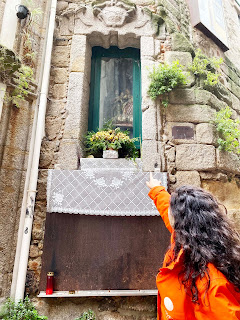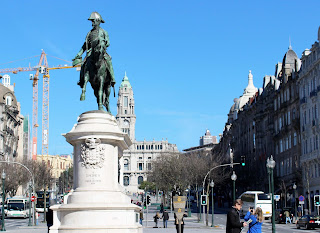PORTO: Legends of Porto - I
How nice it is to walk in a city and discover its secrets, strange places, unknown legends...? We believe that is what completes your experience in a city, that's why we will share some of the best legends of Porto in this post.
1. The miraculous Sant'Ana's Chair
The convent where one of the cults was to... A chair!
And thus this cult was developed - Cult of the Chair of the Sant’Ana Convent - for in there they had a “godly touched” chair that would make the labors easier.
Women would, in exchange for using the chair, donate wax and oil so that the nuns could always have their candles by the altar.
Today we can justify all this: the chair was comfortable, leaving the women in the natural position to give birth; the gravity would also play its role in helping with the labor; the psychological comfort of being surrounded by people who knew what they were doing, instead of giving birth at home, pretty much by themselves.
But in those days it was simply regarded as faith and divine intervention.
There are still people who pass through the altar and make a little prayer or even who go there to leave candles by the altar.
2. The Mule and St. Vincent.
Most cities have a Patron Saint, in Porto, we had three! Yes in Porto we had more than one Patron Saint.
But the funny story here is how St. Vincent came to be the Patron Saint of Porto!
3. The Last Nun of the São Bento Railway Station
São Bento railway station was built over the foundations of a convent that had been previously built in the 16th century! Opened in 1535.
This was the convent of St. Benedict's Order.
It’s occupied by a female order - sisterhood - and they were regarded as the benedicts.
In 1834 there was a new decree made to eradicate the religious orders in Portugal by Joaquim de António Aguiar commonly known as the “friar killer”.
This decree stated that all male religious orders should be disbanded and their properties confiscated, and that all the Convents could not admit new nuns and that they would be extinct after the death of the last nun that occupied the convents.
And so on the 5th of November of 1888 came this convent’s time, and so the procuration was made and stated that upon the death of the last nun residing in the convent it would be made into a railway station (the one we have today).
Still, in that year, there were already engineers taking the measures to start the demolition of the building and, pretty much, invading the cloisters.
To their surprise, the convent was still inhabited and before they appeared, the last nun - D. Maria da Glória Dias Guimarães.
In a very calm and serene way, she said to them:
“You can take all the measures they wanted but know that this convent will not be destroyed while there are religious inhabitants in it, we have much faith in our Patron - St. Benedict - who listens to us and a miracle will happen: either the Minister dies or the Ministry falls...”
Very ominous indeed!
Well, neither of those things happened but it did happen the next closest thing: The Minister resigned a few days later.
It started later to be destroyed in 1892 after the death of that last nun, and, in 1900, the King himself threw the first stone starting the conversion of the old convent into the Railway Station that we have today.
Ironically the King himself did not live to see the end of the construction since it only happened in 1916 when Portugal had already changed from Monarchy into Republic.
It is said that even nowadays, at night, in some parts of the railway station people still claim to hear voices or the prayers of the last nun residing in the convent!
It's a case to say: “Remember, remember the 5th of November!”...
Join City Lovers Free Tours Porto so you can find more about these amazing legends.




Comments
Post a Comment